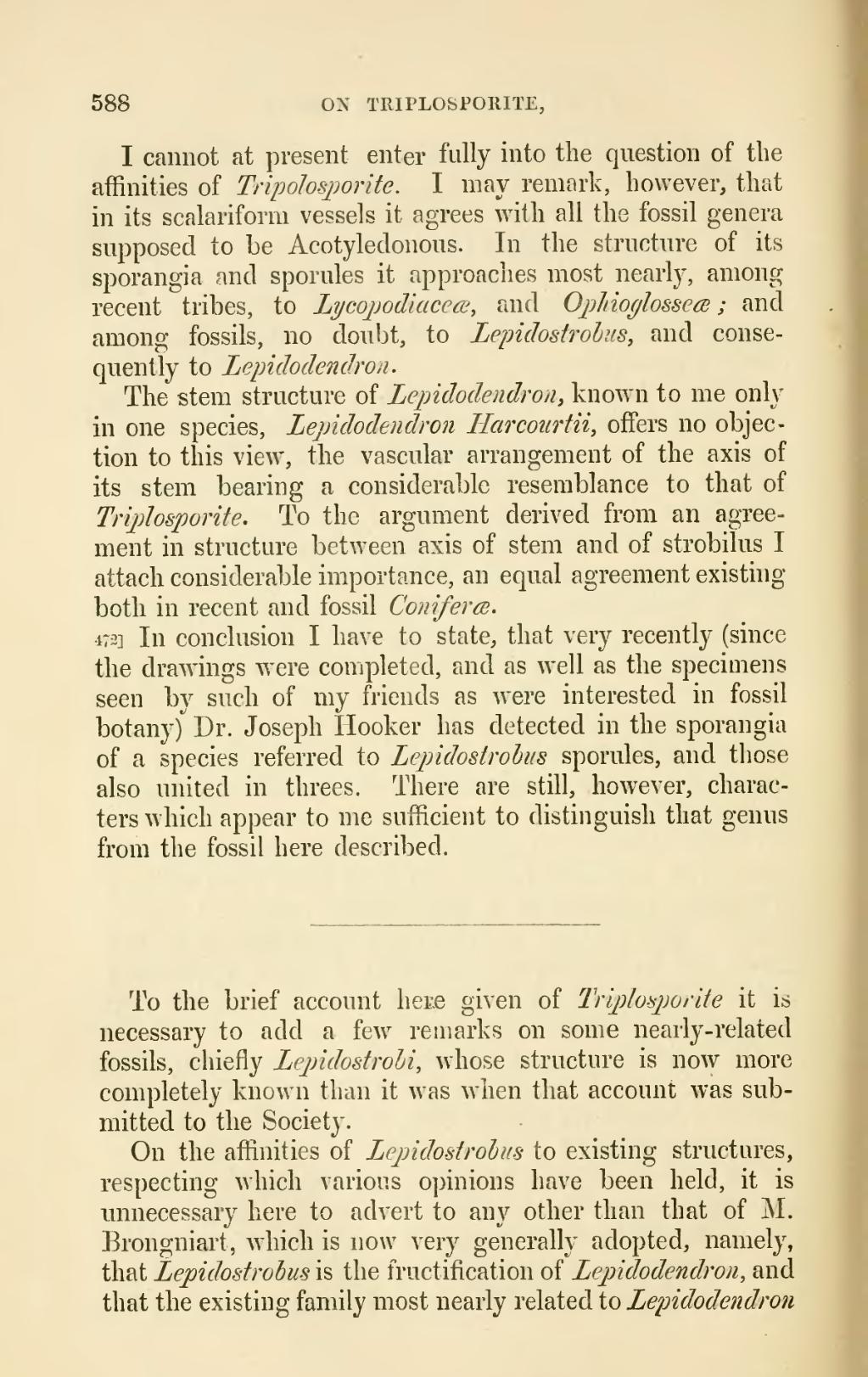I cannot at present enter fully into the question of the affinities of Triplosporite. I may remark, however, that in its scalariform vessels it agrees with all the fossil genera supposed to be Acotyledonous. In the structure of its sporangia and sporules it approaches most nearly, among recent tribes, to Lycopodiaceæ, and Ophioglosseæ; and among fossils, no doubt, to Lepidostrobus, and consequently to Lepidodendron.
The stem structure of Lepidodendron, known to me only in one species, Lepidodendron Harcourtii, offers no objection to this view, the vascular arrangement of the axis of its stem bearing a considerable resemblance to that of Triplosporite. To the argument derived from an agreement in structure between axis of stem and of strobilus I attach considerable importance, an equal agreement existing both in recent and fossil Coniferæ.
472] In conclusion I have to state, that very recently (since the drawings were completed, and as well as the specimens seen by such of my friends as were interested in fossil botany) Dr. Joseph Hooker has detected in the sporangia of a species referred to Lepidostrobus sporules, and those also united in threes. There are still, however, characters which appear to me sufficient to distinguish that genus from the fossil here described.
To the brief account here given of Triplosporite it is necessary to add a few remarks on some nearly-related fossils, chiefly Lepidostrobi, whose structure is now more completely known than it was when that account was submitted to the Society.
On the affinities of Lepidostrobus to existing structures, respecting which various opinions have been held, it is unnecessary here to advert to any other than that of M. Brongniart, which is now very generally adopted, namely, that Lepidostrobus is the fructification of Lepidodendron, and that the existing family most nearly related to Lepidodendron
